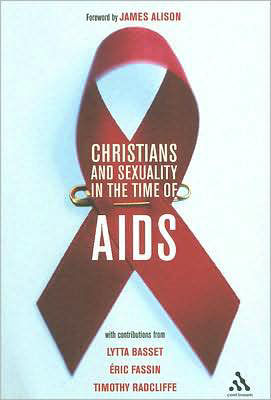
|
Posted August 7, 2008
Book: Christians and Sexuality in the Times of AIDS Translated by John Bowden Continuum. New York. 2008. Pp. 122 An Excerpt from the Jacket:
Christians and Sexuality in the Time of AIDS contains testimonies from people who have been affected by AIDS, in different parts of the world, alongside reflections on the issues from leading figures, including Timothy Radclifffe and Lytta Bassett, and a reaction from an African doctor — a vital voice from a sorely tried continent. By challenging attitudes to sex and the expression of sexuality, relationships and morality, the book suggests new paths towards articulating a theology that is equipped to deal with the modern world. In parts provocative, Christians and Sexuality is essentially a message of hope with the aim that, “those Christians, those who follow the Gospel have and will have more to say, not in order to damage, imprison or kill but in order to support, affirm, give meaning. Like the Word on which it is based, an authentic Christian word is a word which saves. An Excerpt from the Book: “I don’t have three children, but four,” say some mothers. The partnership is often put in peril by the impossibility of being able to count on the spouse. But here, too, there is a vicious circle: the less I accept the other, the more I do in his or her place, the more I take upon myself. . .and the more he or she is demotivated. One can advance only if one does not take the place of the other, i.e., fuse. And that brings us back to the sword: only a break allows an authentic partnership. In the Genesis story there is break and differentiation, with the symbolism of the ‘extracion’ from the side. But what motivates this action is taking human solitude into account and the divine desire to establish a fruitful partnership: ‘I shall make him a helper’. The Hebrew term is neuter, ‘ezer’, and not the feminine ‘ezrah’, which one would expect. So this moment in the narrative is about every type of relationship between human beings and not exclusively about the man-woman relationship: this can be a partnership between two men or two women, without sexuality ever being involved. Now this term ‘ezer’ is for the most part used of God in the Hebrew Bible — in situations of extreme distress, when a human being has no issue and God becomes his ‘helper’. Here we are in the first book of the Bible and, even before God, the other human being is presented as a real ‘helper’. Before the question of amorous and sexual relations even arises, another is presented as the ‘helper of a terrestrial creature who has been given over to a “solitude” which is “not good”’. So according to the Bible the sexual partner is first of all a neighbor. Thus God says, ‘I will make for him a helper corresponding to him’. We find nothing feminine in this expression. The construction is unique in the Bible. It is as if at the basic structure of the human being there is an ‘I’ who is partner of a ‘you’. ‘Corresponding’ suggests ‘response’, ‘responsible’: we could say that the otherness is posited before the sexual difference, even before the ‘woman’ is created and there is any question of procreation. Emmanuel Levinas emphasizes that the other is created to evoke my response, to show me my responsibility: ‘Responsibility for this other — closer than any proximity and yet unknown.’ By contrast, the man of Genesis 3 shows himself to be irresponsible when he attributes the failure of the inter-human relationship to God. ‘It was the woman you put with me; she gave me some fruit from the tree, and I ate it’. Rather, the question must be asked: “What response did I give to Eve?’ Thus in many couples who function more or less in a sado-masochistic way the ‘response’ given to the sadist is sheer passiveness and irresponsibility. An authentic partnership presupposes the constant fidelity of each to himself and herself. This is a fidelity that is certainly more fundamental than fidelity to the other, which so often hides a terrible alienation. In a harmonious partnership two fidelities respond to each other and adjust. As Gabriel Marcel writes, ‘In a sense I can only be faithful to my own commitment, that is, it seems, to myself.’ Table of Contents: Part one Openings 1. Positions and questions: ‘Christians & AIDS’ 2. A time of trial: testimonies Part two Three voices, three ways 3. Sexuality, democracy and transcendence or, Who fixes the norms? 4. To be authentically partners, the energy of differentiation 5. This is My Body, Given for You: Christianity and sexuality Part three Points of view 6. Traces of a debate, in fifteen questions 7. View from Africa 8. Conclusion: a Christian contribution to an ethic of sexuality |
|
